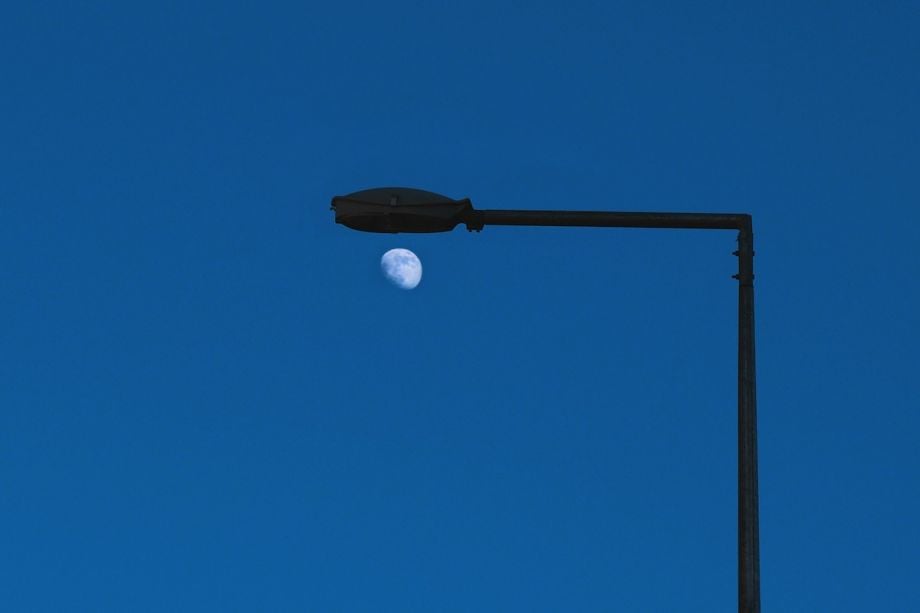
(Photo by Ebrar Soytürk / Unsplash)
A recent study shows that even a small amount of light could make a big difference in preventing pedestrian fatalities at night.
Justin Tyndall, professor of economics at the University of Hawaii, set out to test whether moonlit nights are safer for pedestrians. What he found was surprising: In rural areas with less artificial light, “the brightest moon is reducing pedestrian deaths by like 40%,” he says. Overall, across the U.S., the effect was a 5% drop in deaths.
Since moonlight is only a fraction of the brightness of the average streetlight, this suggests policymakers could make a real difference in pedestrian deaths with low-cost interventions like solar-powered LED lights.
Tyndall’s research has big implications for an ongoing public health crisis. In 2022, an estimated 7,500 people were struck and killed by drivers while walking, with about 80% of these deadly crashes occurring at night.
“The U.S. is pretty unique in that we’ve seen this trend in recent years of this really big surge in pedestrian deaths on roadways,” says Tyndall. “One part of it that’s not very well explained is this big increase has happened during the nighttime hours in particular.”
Intuitively, the relationship between pedestrian deaths and moonlight makes sense. Lighting increases the visibility of people walking on dark nights.
However, there are still questions about the increase in nighttime pedestrian deaths after 2009 — after all, moonlight levels didn’t change, points out Tyndall. Experts point to a number of potential causes, including increase in vehicle size, the use of smartphones and more people experiencing homelessness.
To study the effects of moonlight, Tyndall used an algorithm – originally developed to study plants and animals — that estimates the level of moonlight on any given night.
“There’s certain types of plants that bloom according to moonlight, or this other animal activity that correlates with moonlight,” he says. “I repurposed this to look at its effect on humans or pedestrian safety.”
He combined moonlight estimates with national numbers on pedestrian fatalities and satellite data on artificial light levels.
Moonlight had the biggest effect on roadways with little artificial lighting. This could also have implications for emergency responders in rural areas, Tyndall suggests. If fire departments know that low-lit nights are more dangerous, they can prepare accordingly.
If cities or municipalities want to decrease the likelihood of pedestrian fatalities, they could invest in adding light to dangerous roadways.
“State highways, I find, are particularly made more dangerous by low lighting,” says Tyndall. “Areas where maybe it doesn’t make sense to invest in a full set of street lighting across the whole highway.”
Cities like Los Angeles and Los Vegas are dealing with thieves who steal copper wire from streetlights, plunging streets into darkness. Could solar-powered lights provide a solution? This new research suggests that even adding low levels of light can have an impact.
“A typical street light is perhaps about 30 times brighter than even the brightest moon,” Tyndall notes. “We’re talking about a fairly small increase in the ambient lighting having this really big effect on pedestrian outcomes.”
This story was produced through our Equitable Cities Fellowship for Social Impact Design, which is made possible with funding from the National Endowment for the Arts.
This post was originally published on Next City.